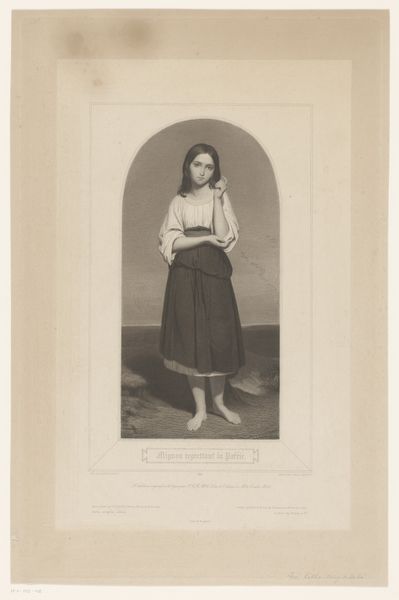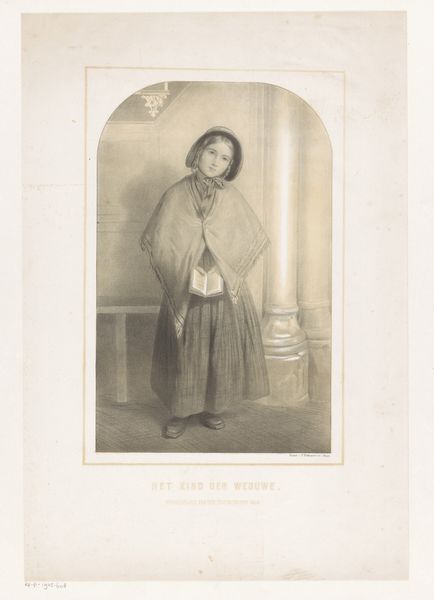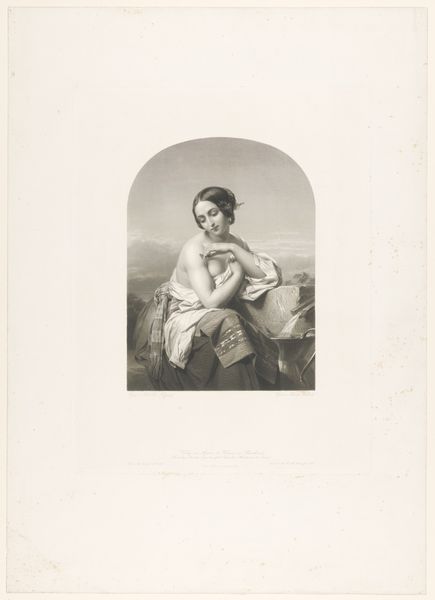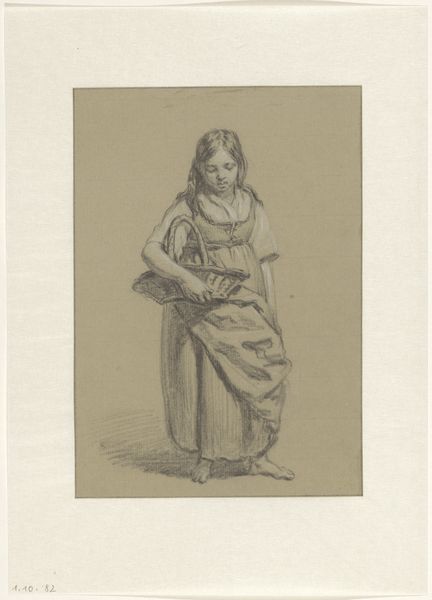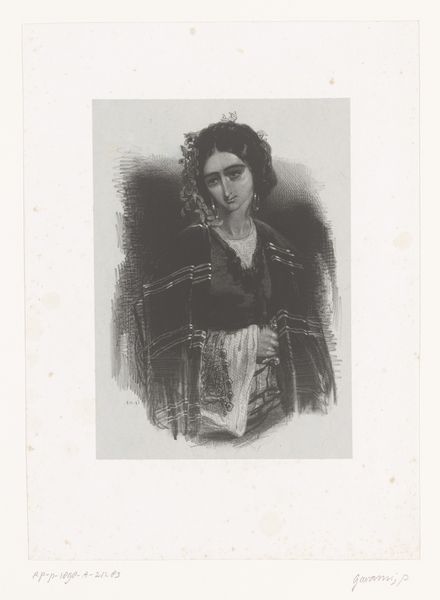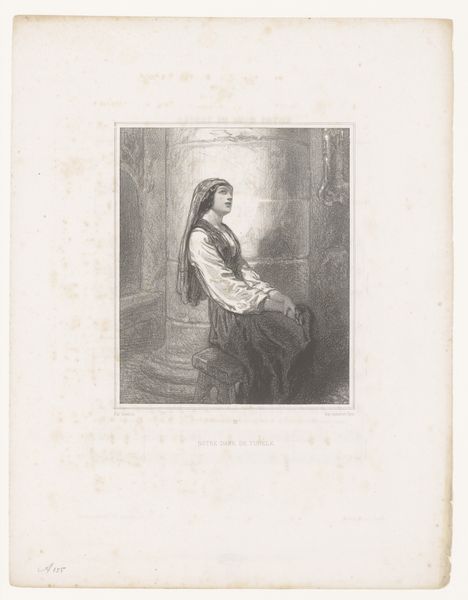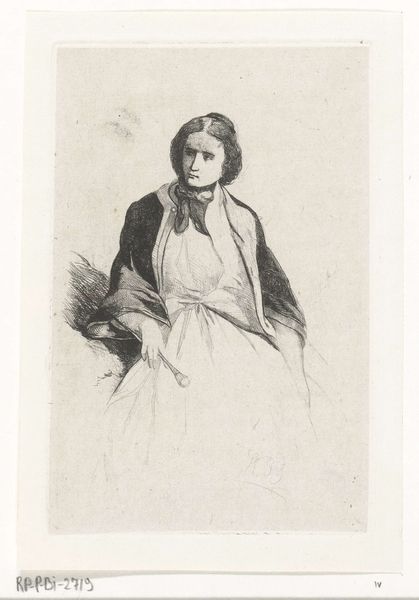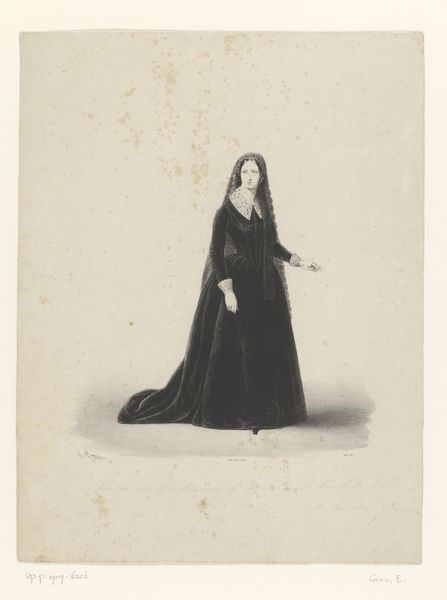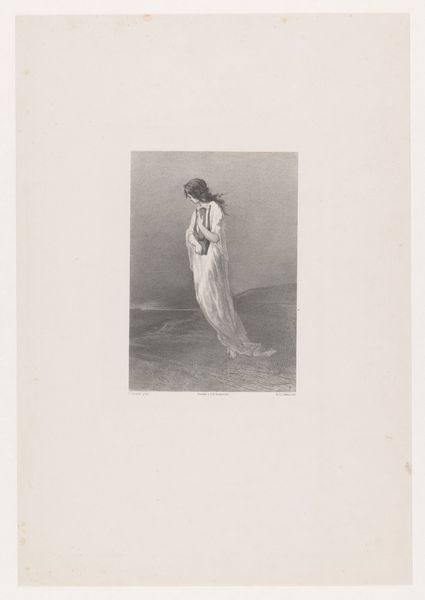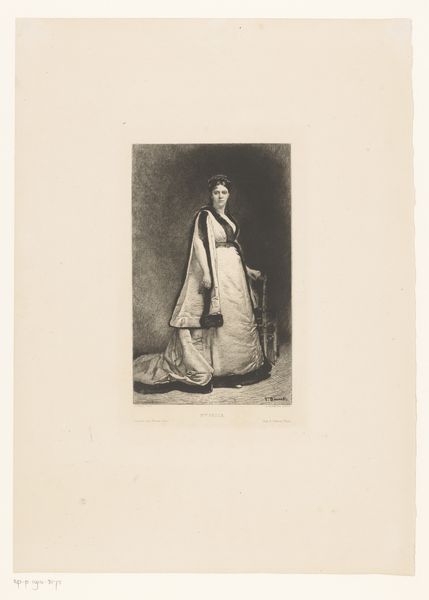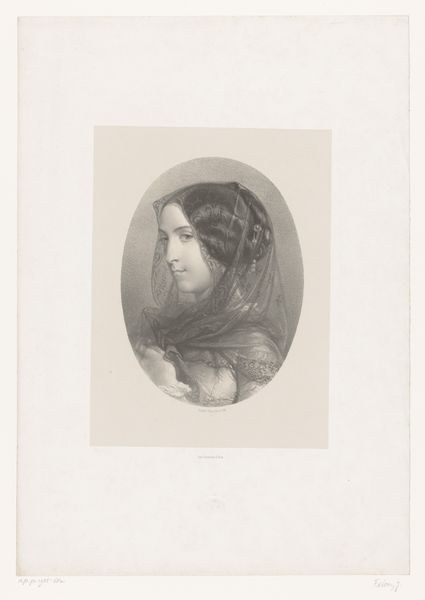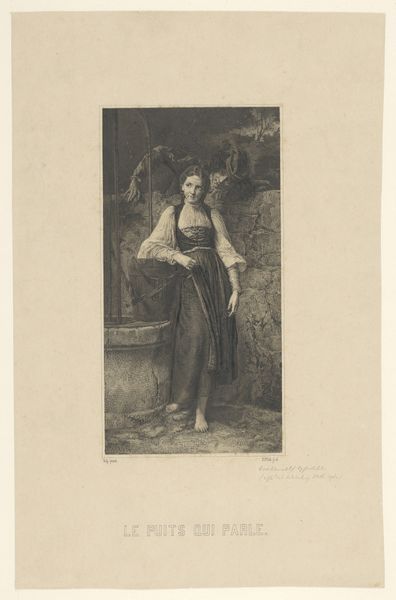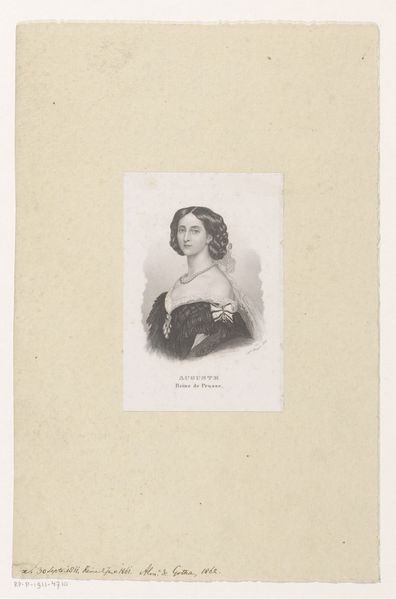
Dimensions: height 310 mm, width 200 mm
Copyright: Rijks Museum: Open Domain
Editor: So, here we have "Mignon," an engraving by August Allébé from 1859, housed at the Rijksmuseum. There's such stillness to her pose; it feels both romantic and melancholic. What do you see in its composition that creates that mood? Curator: Let's focus on the intrinsic pictorial elements. Note the interplay between light and shadow rendered through the meticulous engraving technique. See how the subtle gradations define the form of Mignon, particularly the soft modeling of her face and hands, contrasting with the denser shading of her skirt. It’s about the careful modulation of tonal values, wouldn’t you agree? Editor: Definitely. The stark contrast really brings out her figure against the plain background. Is that typical of the time? Curator: One could consider how the artist manipulates line and texture. Observe the precise, delicate lines used to describe her hair and the folds of her clothing. Then consider how these formal choices evoke a sense of realism, though idealised, of course, filtered through Romantic sensibilities. Are you appreciating how such formal tensions amplify emotional resonance within the work? Editor: Yes, I'm starting to see how the combination of detail and shading affects the way the character expresses emotion. How can the medium shape how a painting like this is experienced? Curator: This question underscores a salient aspect about how print media functioned within that era. Engravings, as replicable art, expanded artistic influence throughout society. What have we learned today through this formal analysis? Editor: By observing elements of shape, contrast and line, we understand more deeply how visual language informs emotional narratives within "Mignon". Thanks.
Comments
No comments
Be the first to comment and join the conversation on the ultimate creative platform.
